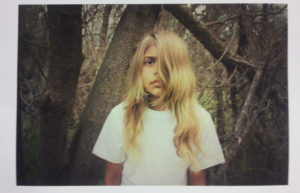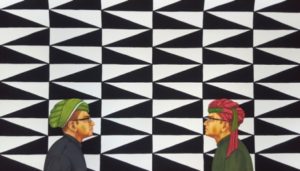Wyndham’s RACE Exhibition: Uncomfortable realities for all to face
Wyndham City Council’s bold move to shine a spotlight on racism uncovers a complex kaleidoscope of perspectives from local and internationally renowned artists in RACE, a group of diverse works exhibiting from July 6 to August 28.
Confronting and provocative, many do not watch the full 10 minutes of Richard Bell’s Scratch at Aussie from 2008, myself included, as curator Megan Evans notes is usually the norm. The video work is full of racist jokes juxtaposed by the Aboriginal artist himself acting as a psychiatrist to young patients who whine about their ‘problems’, unaware of their white privilege and lack of empathy for the First Peoples struggle.
Bell’s fellow members of the Queensland Indigenous art collective proppaNOW, Vernon Ah Kee and Gordon Hookey, also exhibit works with powerful texts at its core. Ah Kee’s painted statements, such as notananimaloraplant, reference the law before the 1967 referendum that categorised Aboriginal people alongside flora and fauna. Hookey’s installation hints at terra nullius with humour displaying cricket objects painted in the colours of the Aboriginal flag and questions the authenticity of Indigenous art.
Stereotypes are further studied through Clotilde Jiménez’s collage portraits of his father, playfully exposing societal views that tough and masculine qualities are associated with black men. Wani Le Frère similarly unravels a social movement in the Congo called sape, dressing in fine attire, with stills of his own uncle in a stylish suit, nodding to colonialism, constraint and expectations of whiteness.

Dianne Jones photographs her niece
The female artists in this exhibition raise their proud Aboriginal voice to also disseminate colonial oppression. Photo-media artist Dianne Jones photographs her niece in a landscape echoing the brutality of her people’s past affecting present generations. Vicki West exposes existing artefacts in the Adelaide Museum that are not authentic representations of Tasmanian history, using kelp sculptures and photography as her mediums. Destiny Deacon’s Daisy and Heather talk about race is contradictory as two dolls, one black and one white with a hollow head, are unable to communicate due to the latter’s ignorance on this contentious matter.
South African artist William Kentridge inserts himself into his work acknowledging hierarchy, elevation of status due to his whiteness and includes imagery of an industrialist’s greed to the detriment of others. David Sequeira’s own self-portraits painted by Indians, specialising in miniature art, purposely show his profile in order to be likened to mug shots. Sequeria also makes the commentary that a black man in a turban provokes irrational connotations in the current political climate.

David Sequeira’s work
A complementary addition to this exceptional exhibition is AMES Australia’s Heartlands 2016 Arts Project: Stories from refugee youth. This 20-minute compile of heartwarming short films acknowledge the struggles and triumphs of its ten storytellers who have settled in Melbourne. Making the journey from Somalia, Burma, Afghanistan, Iraq, Iran, Sudan, Egypt and Pakistan, they reflect on their past with hopes for the future in this new country.
The RACE exhibition is on until August 28 at the Wyndham Art Gallery, 177 Watton St, Werribee as part of the Wyndham’s program of events that unpack and unmask issues around race. Skilfully explores a topic that should be on everyone’s agenda.
Sophia Sourris
AMES Australia Staff Writer












